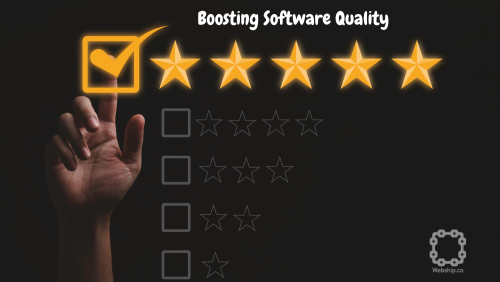Software quality is a crucial factor in determining the success of any software product. In an era where technology drives businesses and user expectations are soaring, organizations must prioritize delivering high-quality software that is robust, reliable, and bug-free. To achieve this, a dynamic combination of continuous testing and automated test automation has emerged as a winning strategy. This article explores the convergence of continuous testing and automated test automation, shedding light on how their synergy empowers organizations to significantly enhance software quality and exceed customer expectations.
Understanding Continuous Testing
Continuous testing is an iterative approach to software testing that emphasizes early and frequent testing throughout the development lifecycle. Traditional testing practices often involve separate testing phases that occur after development, leading to delays in bug identification and fixes. Continuous testing, on the other hand, involves automating test cases and executing them continuously as code is developed and integrated.
The Key Components of Continuous Testing
- Test Automation: Automated test scripts are developed to execute predefined test cases, eliminating manual effort and reducing human errors. These tests can be run continuously, ensuring that new code changes do not introduce regressions.
- Early Feedback: Continuous testing provides rapid feedback on the quality of code changes, allowing developers to catch and fix defects early in the development process. This minimizes the likelihood of bugs propagating into later stages, reducing rework and improving overall software quality.
- Integration and Deployment: Continuous testing integrates seamlessly with continuous integration and continuous deployment (CI/CD) pipelines. Automated tests are executed at each stage of the pipeline, enabling rapid feedback on the impact of code changes on overall system functionality.
Understanding Automated Test Automation
Automated test automation refers to the use of software tools and frameworks to automate the execution and evaluation of test cases. Automated tests simulate user interactions, validate expected outcomes, and provide objective results, reducing the reliance on manual testing efforts.
Benefits of Automated Test Automation
- Improved Efficiency: Automated tests can be executed repeatedly and reliably, eliminating time-consuming manual testing efforts. This frees up testers to focus on more complex and exploratory testing tasks, enhancing overall testing efficiency.
- Increased Test Coverage: Automation allows for a broader scope of test coverage by enabling the execution of a large number of test cases in a short span of time. This helps uncover defects that might have been missed in manual testing, resulting in higher software quality.
- Consistent and Reliable Results: Automated tests provide consistent and reproducible results, minimizing the variability introduced by human testers. This leads to more reliable defect detection and reduces the risk of false positives or negatives.
Synergy between Continuous Testing and Automated Test Automation
When combined, continuous testing and automated test automation create a powerful synergy that accelerates the delivery of high-quality software. Here are some key benefits of their collaboration:
- Faster Time-to-Market: Continuous testing with automated test automation allows for faster feedback loops and quicker bug detection. This enables rapid bug fixing and shortens development cycles, leading to faster time-to-market for software products.
- Early Defect Detection: Automated tests integrated into the continuous testing process catch defects early in the development cycle. This helps identify issues when they are less complex and costly to fix, reducing the risk of critical defects reaching production.
- Agile Adaptability: The combination of continuous testing and automated test automation supports agile development methodologies. It facilitates frequent code changes, promotes iterative development, and ensures that software quality remains high throughout the agile lifecycle.
- Improved Collaboration: Continuous testing encourages collaboration between developers, testers, and other stakeholders. By automating tests, developers gain immediate feedback on the impact of their code changes, fostering effective collaboration and enhancing overall team efficiency.
Conclusion
Boosting software quality requires a comprehensive approach that incorporates continuous testing and automated test automation. The synergy between these two practices brings numerous benefits,





